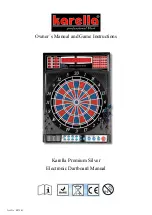
Preparing for Use
R&S
®
NRP Series
11
Getting Started 1419.0170.02 ─ 10
4.3
Important Aspects for Test Setup
Handling the R&S NRP33SN-V power sensor
Risk of contamination
Always wear clean protective gloves when handling the R&S NRP33SN-V vacuum
power sensors to protect the device and its environment from contamination.
Recommended bake-out procedure
When the sensor is inserted in a vacuum chamber, perform vacuum baking for 100
hours at 85°C at a pressure lower than 10
-5
mbar.
Preventing electrostatic discharge (ESD)
ESD is most likely to occur when you connect or disconnect a DUT.
►
NOTICE!
Risk of electrostatic discharge (ESD). Electrostatic discharge (ESD) can
damage the electronic components of the power sensor and the device under test
(DUT).
Ground yourself to avoid electrostatic discharge (ESD) damage:
● Use a wrist strap and cord, and connect yourself to the ground.
● Use a conductive floor mat and heel strap combination.
EMI impact on measurement results
Electromagnetic interference (EMI) may affect the measurement results.
To suppress generated electromagnetic interference (EMI):
●
Use suitable shielded cables of high quality. For example, use double-shielded RF
and LAN cables.
●
Always terminate open cable ends.
●
Note the EMC classification in the data sheet.
4.4
Connecting to a DUT
For connecting the power sensor to a DUT, use the RF connector of the power sensor.
For details, see
Connecting to a DUT














































